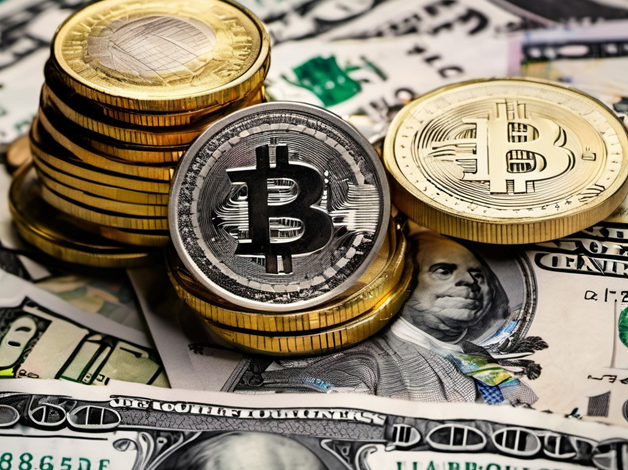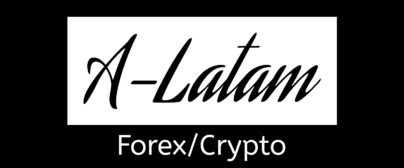
Comparative Analysis of the Euro and Dollar Forex Markets
Table of Contents
1. Introduction
In Section 1, the structure of the essay is superimposed on a comprehensive summary of the events and required outlook for the essay. Section 2 delves extensively into the characterization and interpretation of figure 1, while also providing inputs and uncertainty measures with respect to the historical pricing model of Ripple Capital Ltd. Sections 3 and 4 constitute the soul of the essay and discuss the global financial climate currently underway and its compatibility with our strategies in the Euro and Dollar Forex Markets. Section 5 brings everything to a close with a vis-à-vis of essay-relevant figures 1 and 15.
The topic of this essay is a comparative analysis of the Euro and Dollar Forex (foreign exchange) markets during the month of August 2019. Forex trading is essential to the functioning of global financial markets. This essay thus explores and compares the properties of the Euro Forex Market with those of the Dollar Forex Market. Consequently, the relativity of figure 1 to all other figures is of particular importance due to the stratified structure of the essay. We are going to attempt to provide a comprehensive breakdown of the economic scenario, the political climate, and the outlook for the Dollar Forex Market when compared to the Euro Forex Market.
1.1. Background and Significance
The European Central Bank (ECB) administers the euro. Moreover, the Eurosystem consists of the ECB and the 19 national central banks of the euro area member states. The ECB partly depends on the general economic policies of the EU Member States, particularly in budgetary and structural areas. However, it remains the central bank for the euro area member states. The dollar is issued by the Federal Reserve System, also known as the Federal Reserve, the central bank of the United States. The FOMC is one of the most highly influential parts of the Federal Reserve. Central banks and governments may change their policy or announcement as evidence of what was agreed, which may affect the value of the dollar drastically. The legal tender in the USA is in the Hawaii-Aleutian Time Zone (HAST), Samoa Standard Time (UTC-11), Guam Standard Time (GST), and Eastern and Pacific Time. The fact that the dollar is issued by a single governing body in the large and widely demanded market around the world.
Since the 1970s, the dollar has constituted a significant foreign exchange asset, which is mostly held by global central banks as foreign exchange reserves and is used, among other things, to cancel the balance of payments deficits. This is why the foreign exchange market related to dollar assets is by far the largest in the world. The dollar plays a central role in the international monetary system, while its status as a reserve currency has not been challenged recently. The euro, which has been with us since 1999, is the only other currency which also constitutes foreign reserve assets and is turning to a reserve currency. The euro is currently the second most frequently traded currency in the world, surpassing the yen and the pound. The basic trade conventions and market practices in the euro and dollar market differ from each other. The main trading venue is largely determined by the time zone in which the actual currency is the legal tender.
1.2. Purpose and Scope
Therefore, a comparative study among the four dollar exchange-rate markets and four Euro exchange-rate markets is imperative. Forex has proved to be the most popular trading tool globally, and the FX market is easily the most liquid market in the world. The four Euro markets are: Euro/USD, Euro/AUD, Euro/JPY, and Euro/GBP. The four dollar markets are: AUD/USD, JPY/USD, GBP/USD, and EUR/USD. The principal objectives of this study are to determine if markets where trading is based on or driven by the U.S. dollar are more/less volatile and/or more/less efficient compared to the Euro Forex markets. We will compare the selected Forex markets and then verify whether technical analysis tends to work in more or less the same manner, and more so to see how important it is in order to determine what could influence the efficiency of a market.
The purpose of this paper is to conduct a study on the Euro Forex market development (in particular, the Forex) in comparison with the Dollar Forex trading. The aim is to find out if the two markets are equally efficient or not, to determine if technical analysis has the same importance in both cases or not, and to note what can influence the efficiency of the market. In this paper, we will compare the markets where foreign exchange is traded with a value based on the Dollar with the markets which have the Euro as the basis of trading. The U.S. dollar (USD) has traditionally been used as the base, and it was even intensively quoted against other currencies during the Bretton Woods era. But notionally, the U.S. dollar has lost its pre-eminent position.

2.Historical Overview of the Euro and Dollar
To gain perspective on the competitiveness of the Euro/USD forex market, the analysis of the Euro and the Dollar exchange market must examine the global currencies of the Eurozone and the United States. Finally, it reveals the potential impact on the competitiveness of the currency exchange in the Eurozone and the United States of America. The first practical proposal for economic and monetary integration was designed for a “European Currency Unit” (ECU) and for the European Union (EU). In 1979, the European xen-based trade unit, also known as ECU, was operated as a data-based trade platform. The ECU was planned to be used as an accounting system to adjust the trade charges towards the different dominance of European xenological products.
The Euro and the Dollar are the highest and most prominent currencies in the world. As of 2020, the Eurozone is the world’s second-largest economic space, and the US is the third largest. The European Union is the United States’ largest trading partner. It is important to explore the background of both currencies to understand how the Euro and the Dollar function. This section examines the history of the world’s first and current leading currencies, the Euro and the Dollar, and how history shapes the path of a currency or may shape the future of a currency.
3.Key Differences Between the Euro and Dollar Forex Markets
Compared to the USD, macroeconomic data releases exhibit a lower influence on the volatility of the EUR exchange rate, suggesting that the dollar’s exchange rate is less influenced by information regarding the economy. In order to capture the behavior in the financial market and the differences between the two currencies’ spot market, participants in the forex market were divided into two main categories: financial market participants and commercial participants. Participants who respond to fluctuations in the exchange rate are known as commercial participants. An investment manager with an international equity-geared fund reckons that we can trade in equities in various countries and opt to do it in either the dollar or euro because they are the only two currencies that can fund us. In addition, the white economic paper of the euro shows that the proportion of trade undertaken by euros to dollars will continue to increase. That gives a guarantee that we can always finance our positions. It argues against sterling and yen because we can finance only a limited number of comparable trades with them. In conclusion, it is clear that the euro is the only currency that directly competes with the US dollar.
In this research project, the key differences between the Euro and dollar FX markets are analyzed using statistical tools and regression analysis. The findings indicate that the dollar’s and Euro’s exchange rates differ in terms of their economic contribution to their strength.
3.1. Economic Factors
The performance of major economic indicators is important in the case of the US dollar, such as the U.S. consumer price index (CPI), which is a measure of price movements based on the comparison between the retail prices of a representative shopping basket of goods and services (used by households) for two successive months. U.S. non-farm payrolls represent approximately 80% of the workers who produce the entire gross domestic product of the United States. Together with production, non-supervisory personnel account for approximately 80% of the workforce and are related to manufacturing, construction, and services. The U.S. sales index is a monthly survey on government purchases by private industry consisting of a 20,000-sample sample of institutions. The U.S. Federal Reserve Bank may cut rates if aggregate demand is too weak and bears hard on employment or the inflation rate appears to be heading below the central bank’s 2.0% comfort zone. On the other hand, if the economy is expanding so quickly, then it can be an inflation problem, and the central bank may raise interest rates.
A high level of liquidity in the forex market allows it to absorb the impact of economic news. Here we list some economic factors capable of influencing this. Some macroeconomic factors may influence the USD only, leaving no effect on the euro, or otherwise may impact on the EUR only. This distinction is crucial due to the close economic link of the United States and Europe. If a fundamental is eurocentric, it will make trade in euros more sensitive and risky as, with its closer economic link to the U.S., it does not always follow the same direction of the underlying fundamental. Considering the euro and US dollar, the main indicators include GDP, inflation (CPI inflation and PPI inflation), unemployment, and interest rates, whereas monetary policies also matter.
3.2. Political Factors
There are certain considerations that shape the foreign exchange market of any country, and the forex market is no stranger to significant political consideration. A multitude of political factors, including but not limited to societal instability and governmental policies, can influence the general valuation of the foreign exchange reserves in a country. Often viewed as ‘conservative’ among other countries, the Federal interest rate has remained low for the most part, showing signs that the nation focuses on making its reserves a ‘safe haven’ instead of looking to increase direct yields. In contrast, the new European Economic Community (EEC) will focus on creating a ‘stand-alone’ reserve currency, while the U.S.
dollar is often linked to international trade, largely being a supply of the Eurodollar discussed earlier.
The central bank in a nation wields immense influence on its domestic forex market. Where large foreign exchange reserves of another country and the valuation of your domestic fiat currencies like the Euro and Dollar are concerned, understanding the specifics of the forex market of the other country becomes essential. Upon analyzing the two forex markets, one can identify certain similarities and differences that often reflect the actions of each country. Political influences are often responsible for the valuation of the dollar and the euro in the market.
3.3. Market Participants
Central banks conduct operations in the Forex market for a variety of reasons, including buying or selling denominated part of their foreign exchange reserves. They may also impact the forex market indirectly by adjusting interest rates to meet inflation targets. In addition to monetary policy operations, currency trading between central banks has recently increased significantly. Because of this rising trend and the higher income that foreign exchange reserves generate, transactions are conducted mainly based on the profits of investment activity rather than insurance. As a result, central banks must employ a professional investment approach. Commercial and investment banks are crucial participants in the Euro and Dollar Forex markets. They offer forex market liquidity and collaborate in combination with other large banks. The large banks make two-way prices for the FX conversion, in which commercial banks deal instantly and typically offload risk with the price challenged down into many transactions at favorable mid-market quotes to smaller institutions that exchange the physical goods that lie at the heart of the commerce definition.
The foreign exchange market is the world’s largest market in terms of trading volume, with diverse groups of participants. However, the composition of participants in the Euro’s and Dollar’s Forex market differs. The US dollar accounts for almost 38% (2019) of the world’s trade, and the euro accounts for 36%. The dollar is the world’s largest reserve currency, while the euro comes next. As a result, the US dollar and the euro account for the bulk of the international forex market. A reserve currency is widely used to keep the money that central banks accumulate. It is said that the euro is a synthetic reserve because it is composed of the legacy currencies of the participating Eurosystem national central banks.

4.Impact of Global Events on Euro and Dollar Exchange Rates
I put the value of the foreign exchange rate of the dollar and euro in the rank of the invert function as the currency pair USD / EUR, in which this source has the ability to pronounce only the directive of a continuous change in the emission of US dollars according to the current US monetary policy, as expressed in a continuous lowering. The global geopolitical situation is of direct interest to the major currency pair USD / JPY, in which the Japanese yen, attracted by Japan’s status as a low-yielding country with a large excessive amount of profits (savings), attracts Japan’s investment potential, based on the commercial non-allocation criteria of the profit of the second and third categories of investors as well. Orient money of US population in foreign investments towards the Far East. This policy was supported by distancing the American continent from European political and economic issues. I believe that these two main pairs of currencies make up the heart of the forex market, and the other trends of emerging developed countries imitate these trends because forex market players cannot ignore these four main currencies.
The reduction of the limiting effect of the global economic situation and, accordingly, of the limited case for trading operations of the European Financial Times Stock Exchange can be made through the consistent increase in the list of national currencies, quotations of which are published daily and several times a week in thematic mass media, as is done by the United States with the aim to create their own system of Latin America and obtain a long-term source of monetary income through trading operations conducted within the forex market, on the basis of the offered quotes of corporate foreign exchange operations of the leading US banks, the actual value of foreign exchange rates of US foreign policy for the profit of a powerful lobby of firms and corporations in the US.
5. Conclusion and Future Trends
The major implication for future trends is that, with the transition from a unipolar to a multipolar world, it is highly likely that Europe and Asia will attempt to reduce their overreliance on the Dollar. As the Euro and Dollar have replaced the Gold standard as an anchor currency, it seems possible that the Euro could also drop as an anchor. As for the Euro, it seems feasible that it might become a secondary anchor along with other key currencies, which could mark a partial return to the gold standard. Another potential scenario could involve the Dollar being completely replaced with a basket of international currencies managed by the IMF, a scenario of full substitution. The Euro as the safe currency at the global level is possible according to the model; however, the decline of the share of the Dollar to a replacement level would depend on the amount of direct trading in the exchange rate. Despite the share of direct trading representing less than 30% of the global trading in financial assets, there is evidence for multiple equilibria type A and B, where both anchor currencies pair a zero probability with a non-zero share of substitution-pro preferred currencies.
This essay has analyzed the Euro and Dollar forex markets. The findings of this analysis are in accordance with theoretical expectations, providing evidence of the effectiveness of the GRH in explaining the behavior of the exchange rate. Also, some results have highlighted the occurrence of direct trading in the exchange rate market as well as the possibility of multiple equilibria. This analysis has also provided a framework for a comparative assessment of Euro and Dollar exchange rate behavior. According to the analysis, the partial substitution of the Dollar for the Euro cannot be seen as an investment in safe insurance. The exchange rate market is mainly demand-driven and hypotheses of safe-haven and full substitution are both not supported by the data.





